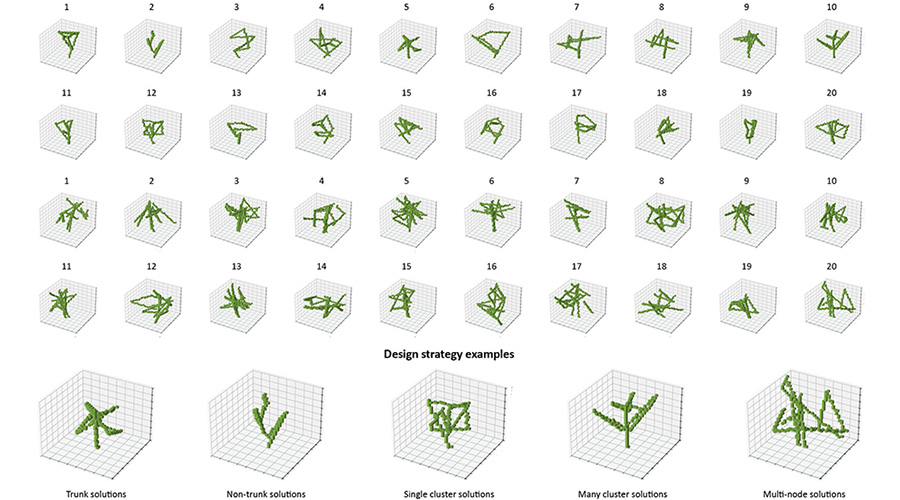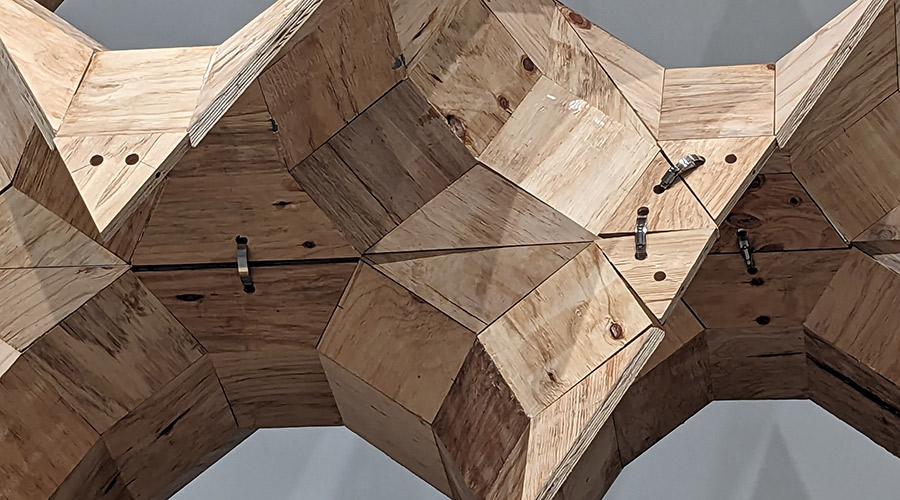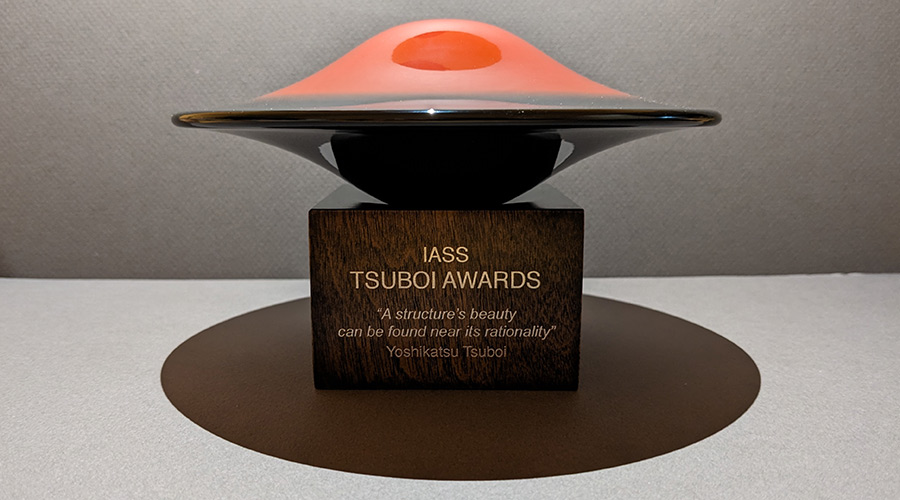Our new article: "An Artificial Intelligence Agent That Synthesises Visual Abstractions of Natural Forms to Support the Design of Human-Made Habitat Structures" has been published in “Frontiers in Ecology and Evolution” and is freely accessible online here.
Authors: Gabriele Mirra, Alexander Holland, Stanislav Roudavski, Jasper Wijnands, Alberto Pugnale.
Large old trees will soon disappear in many landscapes. Without old trees, birds and many other organisms lose their homes. The habitat structures provided by old trees are difficult to replace because trees take hundreds of years to grow and decay. The article describes the development and application of an AI agent that learns to design simplified surrogates of natural trees. These structures can be placed in treeless areas to regenerate bird populations. The AI agent learns to capture geometric features from a dataset of 3D scanned trees – including complex canopy distributions and horizontal and exposed branches – and synthesise artificial forms that reproduce those features. We illustrate that the agent learns to produce visual abstractions of trees, i.e., simplified forms that only retain the most relevant visual information. We define a set of metrics to evaluate the synthetic trees produced by the AI agent and demonstrate their ecological suitability. Our evaluation also shows that such forms can help improve currently used systems – such as utility poles – and can therefore support the design of human-made artificial habitats. Our method can integrate with a wide range of bio-informed design approaches where the transferral of knowledge from biology to design is based on the construction of visual analogies.
This work is part of the research topic Biologically-Informed Approaches to Design Processes and Applications, edited by Mark Elgar, Cecilia Laschi, Devi Stuart-Fox, Alberto Pugnale and Ahu Gumrah Dumanli-Parry, and promoted by The BioInspiration Hallmark Research Initiative (HRI). It is the result of an interdisciplinary collaboration between academics and PhD students affiliated with the Faculty of Architecture, Building and Planning of The University of Melbourne.



